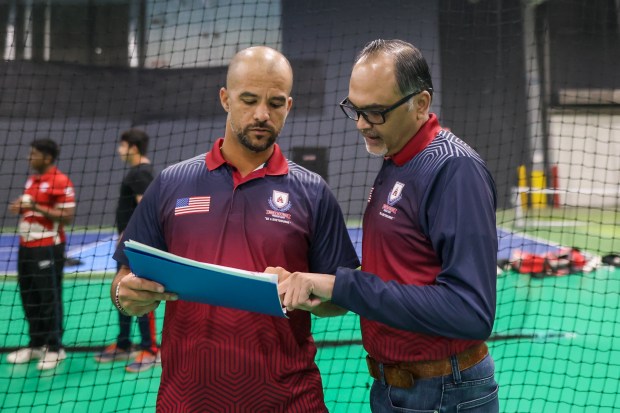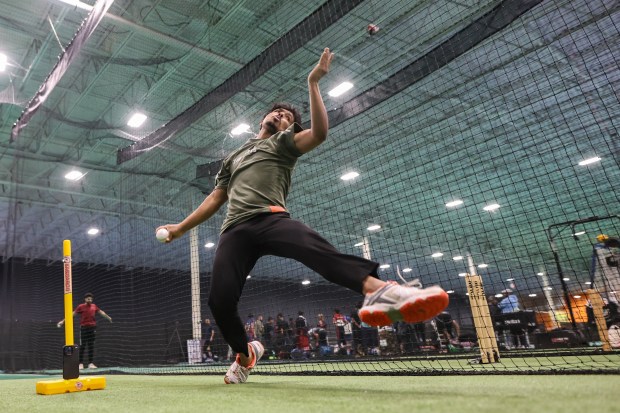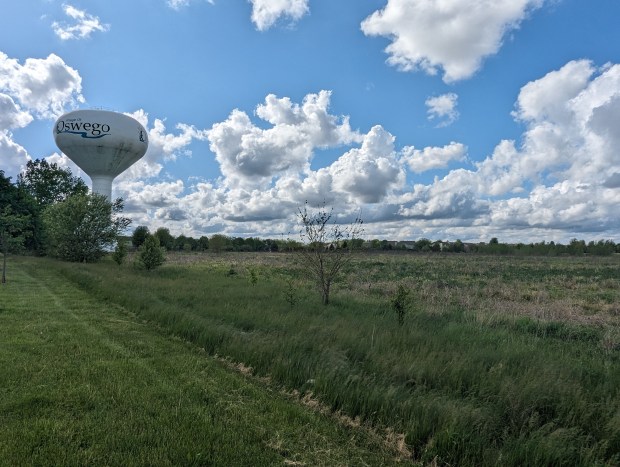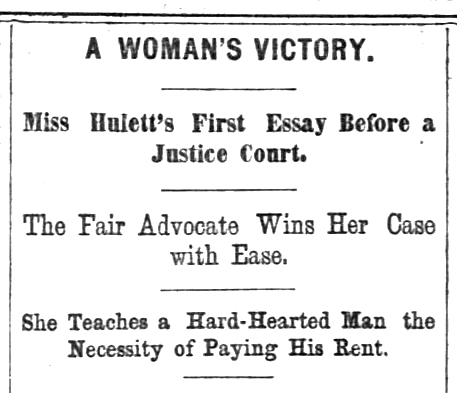While professional sports teams in Chicago are taking a look at new stadiums, and facing roadblocks along the way, a professional cricket team in the far west suburbs got quick approval for a stadium that could hold up to 24,000 fans.
The future Breybourne Stadium in Oswego is planned to be the seat of the Breybourne Cricket Club, which currently has teams in a number of regional amateur and professional leagues. Club Chairman and CEO Paresh Patel, an Oswego resident, hopes that the stadium will also allow the club to one day field a team in the newly-formed Major League Cricket.
“Chicago has the second-highest cricket consumption demographics in the country,” Patel said. “There is so much demand to play cricket, in the six months of the summer that we have, that every single day I can sell this stadium up.”
Conceptual plans for the stadium include a hotel, a restaurant and a player clubhouse with a training center at a currently vacant 33-acre site on the northwest corner of Tuscany Trail and Orchard Road. No public funds or tax incentives are being given to the project, which Patel said is estimated to cost around $100 million.
At 24,000 seats, it would be the largest permanent cricket stadium in the country, according to Patel.
However, there are no guarantees the stadium will get that big. The project is being developed and constructed in five phases, and the last two, which would add a combined 18,000 seats, are dependent on the success of the stadium’s earlier phases, Patel said.
It is this phased approach that makes the stadium project so unique and likely what caused it to be approved by the village of Oswego so quickly, according to Oswego Village Administrator Dan Di Santo.
Instead of giving final approval for the whole project all at once, the Oswego Village Board gave preliminary approval for the project as a whole and final approval for phase one in November. That first phase of the project is the construction of the field itself, with the actual structures like seating and a clubhouse coming in later phases.
“It’s basically like saying, ‘Yes, in concept, we love this idea, and it can work, but there’s a lot of details to be worked out,’” Di Santo said.
Each subsequent phase will need to come back before the Oswego Village Board for final approval, and each phase will require its own engineering and studies to be completed before approval is given, he said.
An artist’s rendering of the planned cricket stadium in Oswego. (Dewberry)
A project of this size needs to show, through studies and engineering plans, that it will not have a significant negative impact on neighbors or surrounding roads, officials said. However, the phased approach means that Patel will only need to produce those studies when it is relevant for the next phase of the project.
This makes sense for both the village and the developer, according to Di Santo. He said the village gets the most up-to-date information whenever a phase is up for final approval, since some of these phases are years away from even being considered, and Patel gets his project approved quicker and with less up-front investment in engineering plans and studies.
Because the approved first phase of the project has no parking, no lights and no seating, Patel did not need to provide the village any studies on the potential impact of traffic, light and sound from the stadium on nearby residents.
Those living near the site of the future stadium were concerned about these impacts, and brought those concerns before the Oswego Planning and Zoning Commission and the Village Board, according to past reporting.
Oswego Village President Ryan Kauffman said the concerns are legitimate, but the Village Board will make sure they are addressed before future phases get final approval. At this time, Kauffman said he believes Patel is addressing residents’ concerns in the stadium’s design.
Despite the pushback from nearby residents, most in Oswego are actually in favor of the stadium because they see it as a “significant boon” to the community, which is why the preliminary approval passed so easily, he said.
The approval process began just over a year ago when Patel approached the village about the stadium project, according to Di Santo.
He said it started with a simple interest meeting where city officials told Patel that the idea was good and the location was perfect, but he should probably get some feedback from neighbors of the property before getting too deep into the stadium’s design.

About 250 people showed up to that neighborhood meeting, Patel said. There, neighbors spoke with traffic engineers, architects, event managers, land planners and other members of the project team about the proposed stadium.
After taking into consideration comments made at the neighborhood meeting, Patel officially submitted the project for review in late summer 2023, Di Santo said. The project was then approved by the Oswego Planning and Zoning Commission in September 2023 and passed the Oswego Village Board with a 4-1 vote the next month.
Construction is set to begin sometime this summer. Currently, phase one is in the final engineering phase, and the project is still awaiting permit approval from Oswego, according to Patel.
Also this summer, Patel plans to present phase two of the project to the Oswego Village Board for final approval, he said. This phase adds the players’ clubhouse and training center, seating for up to 2,000 spectators, stormwater infrastructure and parking lots on the south, east and west of the site, according to past reporting.

Phase three of the project, which is proposed for late 2024 or 2025, would add another clubhouse for members of the Breybourne Cricket Club, seating for up to 6,000 spectators and a parking lot on the north side of the property.
After phase three, Patel said the stadium would be large enough to support national events, and that the two future phases of the project rely on the success of the stadium at that point.
While the project took less than a year to get from informal proposal to preliminary approval, Patel said it took years of work and setbacks just to get to that informal proposal.
The idea for the Breybourne Cricket Club and accompanying stadium came during the COVID-19 lockdown when Patel and his wife were thinking of an exciting project to work on together, he said. Patel first started playing cricket when he was 5 years old and even played semi-professionally when he lived in India.
In 2021, the search began for a suitable site to hold a cricket stadium, according to Patel. Several sites across the Chicago suburbs and beyond were pursued, and initial planning even began for many of the locations, but something would always come up that would halt the progress and send Patel looking for a new site.
While it took some time to find the perfect location, Patel said he is glad to be doing the project in Oswego. He even bought the land before getting the stadium approved because he knew he wanted to do something on Orchard Road whether the stadium worked out or not, he said.

Officials from Oswego and beyond have said they are also glad to see the stadium coming to the village. According to Di Santo, the village has been talking about making Orchard Road an entertainment destination, so the stadium fits perfectly within that vision.
“It’s a very exciting project for the village,” he said. “Having this large investment made in our community is a real benefit to Oswego. It puts us on the map.”
Oswego’s hope is that the stadium will attract people to the village from the Chicago area and beyond, according to Kauffman. He said more tourism means more money in the local economy, as those visitors eat at restaurants, shop at local stores and fill their cars up with gas.
The stadium has already been endorsed by USA Cricket, and Patel is working with them to get the stadium sanctioned for international events like the World Cup, he said.
Sports tourism is already the main driver of visitors to the Aurora area, particularly for amateur and youth sports, which means that marketing this new stadium will fit right in with the other efforts of the Aurora Area Convention and Visitors Bureau, said the group’s executive director Cort Carlson.
“Once the word gets out that we have the stadium, already being able to service the other markets in sports is certainly going to help for cricket. It’s nothing new for us,” Carlson said. “We know how to send out a hotel lead. We know how to bid on an event, and we can do that. We know how to service an event.”
Locally, cricket organizations have already been reaching out to lease the field to host their own leagues, according to Patel. He said between 60 and 80 days of cricket have already been booked.
“The demand is tremendous,” Patel said.
Nishanth VJ, who is involved with Chicago Youth Cricket Academy, the Chicago Tigers semi-professional cricket team, the Chicago Premier Cricket League and other cricket-related initiatives around the Chicago area, agreed with Patel that cricket is wildly popular in the Chicago area.
Chicago already has a presence in the national cricket scene because of the popularity of the sport in the Chicago area, particularly among the Southeast Asian population, he said.
As an example, he said national Minor League Cricket has 27 teams, and two of those teams are from the Chicago area.
To support that popularity and develop talent at home, Breybourne Cricket Club is going to be developing programs for women and youth, and it will be launching a number of its own cricket leagues, according to Patel.
He said the club is also working with local school districts to create pathways to amateur or professional cricket through elementary, middle and high school cricket programs.
Only when the stadium is not hosting a Breybourne Cricket Club game or program will it be leased out to other organizations, Patel said. Still, the new stadium is going to be important for Chicagoland’s cricket players, whether or not they get to actually play there, according to VJ.
When he travels with his cricket teams to places that have professional cricket stadiums, like Florida or Texas, the players there are noticeably better because of the professional infrastructure, he said.
“One of the things that the Chicago area lacks is infrastructure like that to develop the game of cricket,” he said. “I think the biggest benefit that the stadium is going to bring is the non-Chicago crowd will look at Chicago differently once we have the stadium.”
rsmith@chicagotribune.com





